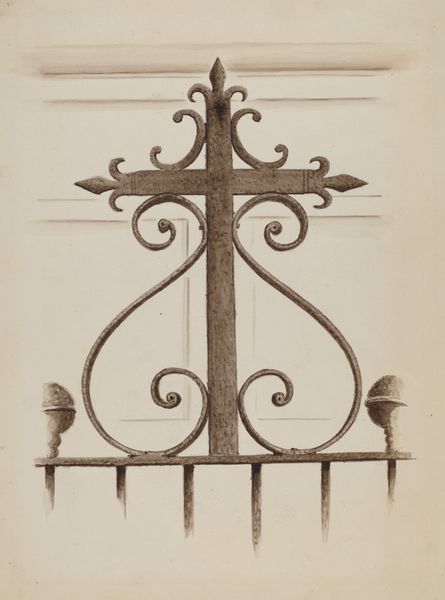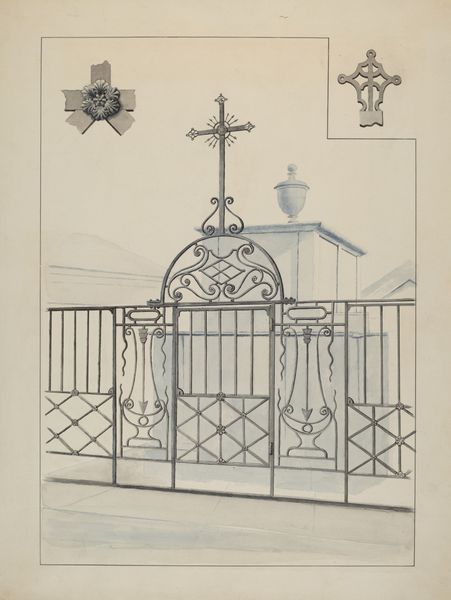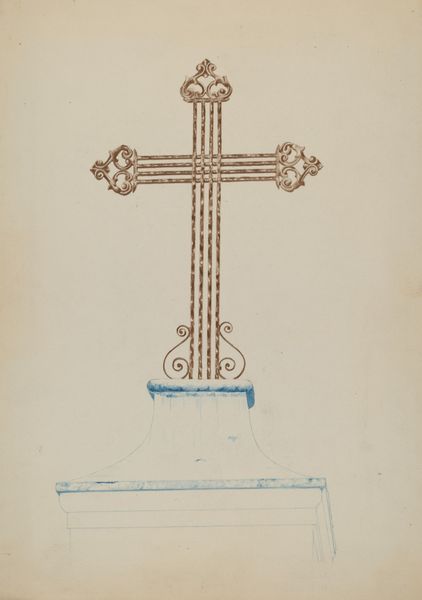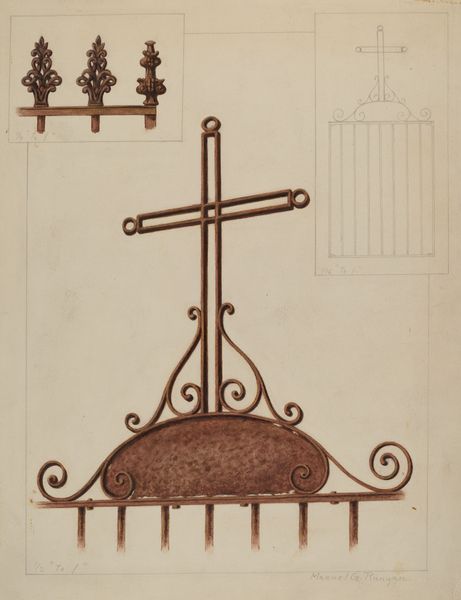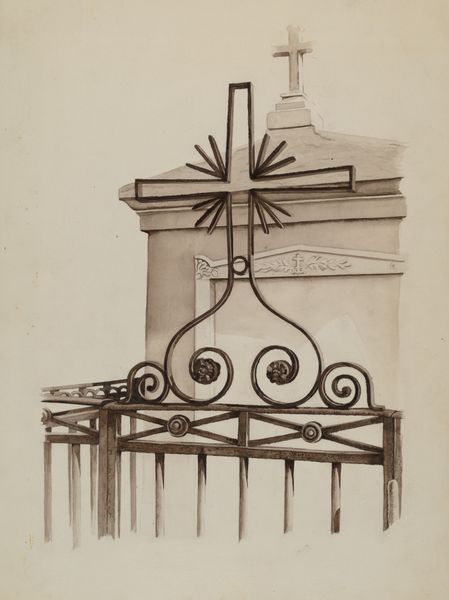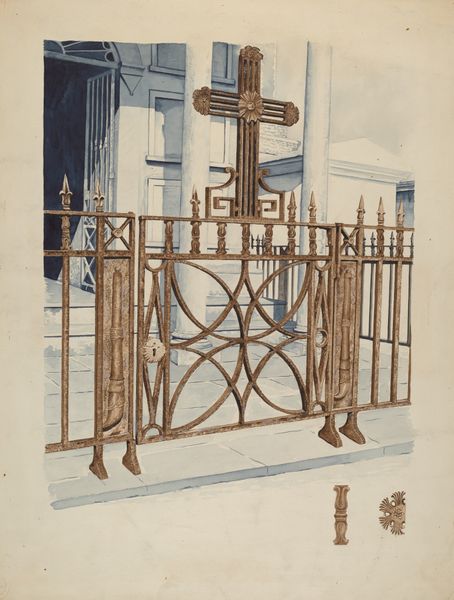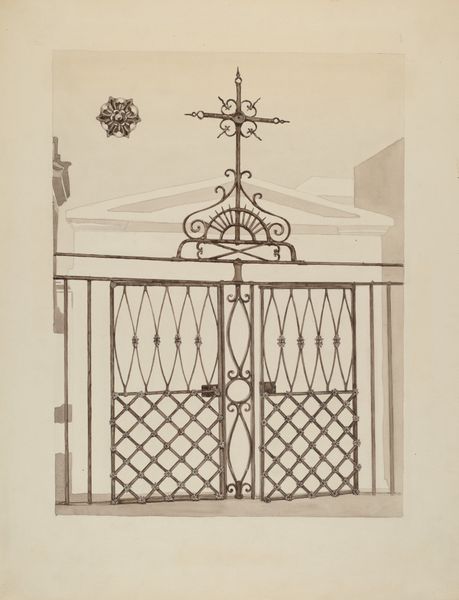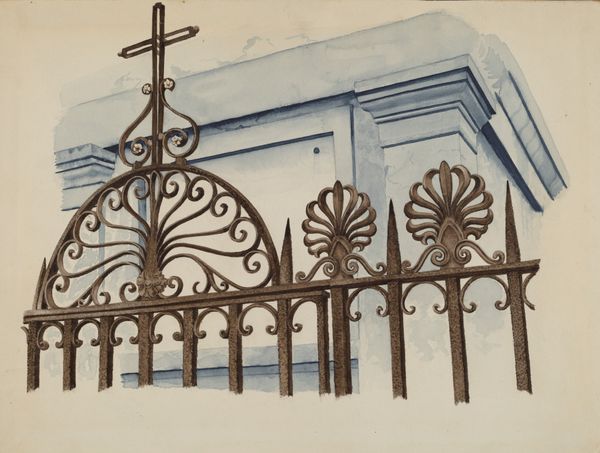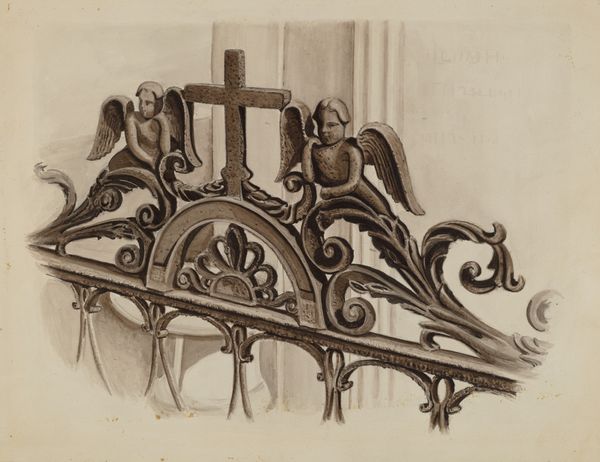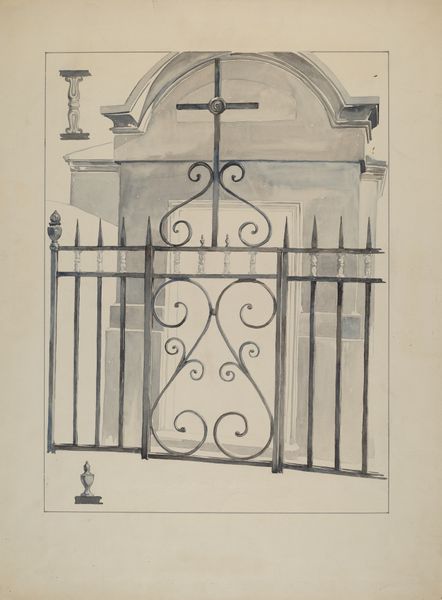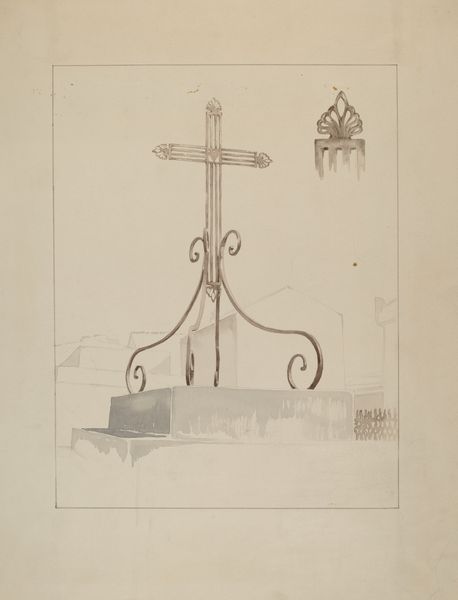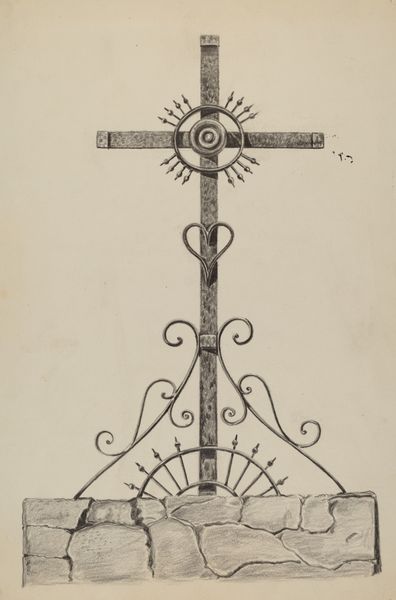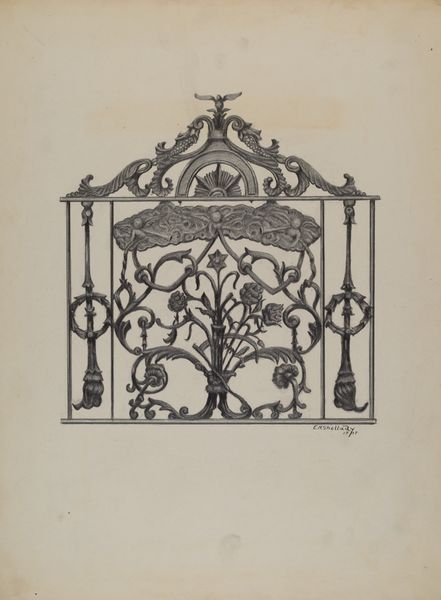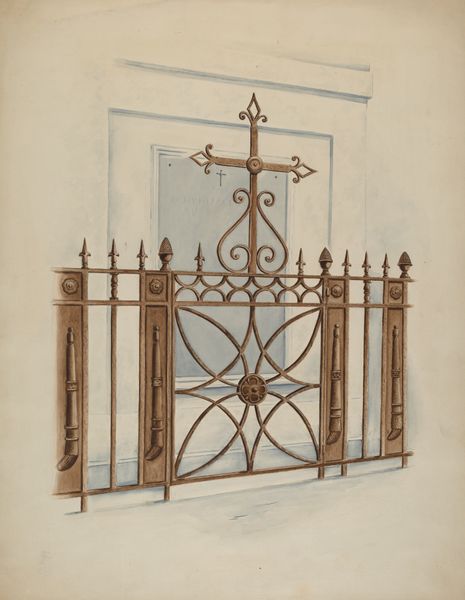
drawing, watercolor
#
drawing
#
landscape
#
watercolor
#
watercolor
Dimensions: overall: 30.6 x 23 cm (12 1/16 x 9 1/16 in.)
Copyright: National Gallery of Art: CC0 1.0
Editor: This is Ray Price’s "Cross," a watercolor drawing from around 1936. The subdued colors create a melancholy atmosphere. What stands out to you in terms of its cultural significance? Curator: Well, thinking about the socio-political context of 1936, during the Great Depression, and even the rise of Fascism in Europe, the somber mood resonates. This wasn't necessarily a period of widespread public art celebrating prosperity. It speaks to social conditions and, perhaps, reflects personal faith or solace sought in religion during a time of great uncertainty. Editor: So the cross isn’t simply a religious symbol; it's also a reflection of the times? Curator: Precisely. Consider also where such an image might be displayed. Was it created for a church, a gallery, or perhaps private contemplation? Its display context drastically shifts its meaning. How does a museum displaying a piece like this affect its interpretation compared to, say, a roadside memorial? Editor: That's fascinating. It makes me wonder about the power dynamics inherent in showcasing religious imagery. Do you see a connection to earlier landscape traditions within this watercolor? Curator: It’s a landscape, of sorts. A landscape imbued with the weight of history and societal challenges, not just an idealized picturesque scene. Think about the institutional validation involved: someone decided *this* cross deserved to be preserved, displayed, considered art. Editor: That really makes me think about how art isn't created in a vacuum, and the values museums project by what they choose to display. Thanks for this insight! Curator: The pleasure is mine. Remember that viewing art is not just a passive activity but engaging with layers of societal influence and personal intention.
Comments
No comments
Be the first to comment and join the conversation on the ultimate creative platform.
